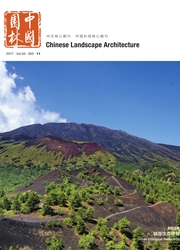

 中文摘要:
中文摘要:
雨水花园,即景观良好的生物滞留设施,是中国城市低影响开发、“海绵城市”建设的代表技术,其地下隐蔽的构造填料是雨水花园实现消纳径流、净化雨水的重要支撑基础。查阅CNKI和Web of Science两大数据库截至2015年底的有关雨水花园构造的文献,运用内容分析法研究发现:1)雨水花园构造研究正成为雨水花园的研究热点;2)雨水花园填料可归纳为天然填料、人工合成填料两大类,不同配比的填料对雨水花园净化、渗透有显著影响;3)构造及填料对总悬浮物、重金属、油脂类、大肠杆菌群等病菌去污效果较好,但对N、P营养物的去污效果不稳定。最后探讨了雨水花园构造研究方面尚存的不足,并展望其未来研究方向,旨在对我国城市建设中雨水花园的科学营建提供参考借鉴。
 英文摘要:
英文摘要:
Rain garden, one of the good landscape bioretention facilities, is the typical technical method of urban low-impact development techniques in building "Sponge City", and its hidden underground structure and the substrates are the foundations of the rain gardens infltration and purifying storm water run off. In this paper, through consulting the relevant literature about rain garden structure from the CNKI and Web of Science databases till to the end of 2015, and by using content analysis, it was found that: 1) the study of structure is becoming a hot trend of the rain garden; 2) the substrate can be divided into two parts, one is the natural substrates made from the natural materials, the other kind is man-made substrates. Substrates with different composition have different purifcation effects and soil purifcation effects of the rain garden; 3) the structure's purifcation effect of total suspended solids (TSS), heavy metals, fats and oils, coliforms and other bacteria are good, but it is not very stable for N, P nutrient purifcation. Finally, the article discussed the defciency of the present study of rain garden structure and prospected the research direction in the future, so as to provide reference for the rain garden research and practical application.
 同期刊论文项目
同期刊论文项目
 同项目期刊论文
同项目期刊论文
 期刊信息
期刊信息
